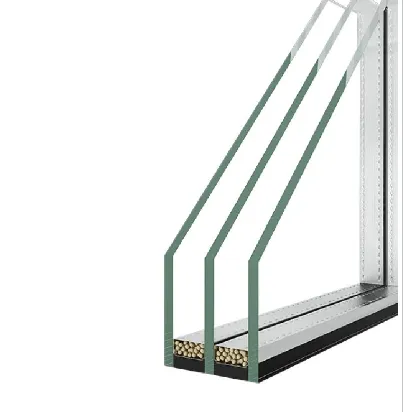

In the realm of modern architectural glazing, solar control low e glass has emerged as a cornerstone of sustainable design, blending thermal insulation with solar heat management. From the specialized performance of solar low e glass and Solarban low e glass to the advanced technology of triple low e glass and triple silver low e glass, these solutions redefine how buildings interact with sunlight. Let’s explore how each variant addresses specific climate needs and design requirements, shaping the future of energy-efficient construction.

Solar control low e glass is engineered to regulate solar radiation while maintaining thermal efficiency, making it ideal for regions with intense sunlight. This glass uses advanced coatings—often incorporating silver, metal oxides, or nano-ceramics—to achieve a low solar heat gain coefficient (SHGC) alongside high visible light transmittance (VLT). In Phoenix, a commercial building with solar control low e glass can reduce summer heat gain by 60% while preserving 70% natural light, minimizing air-conditioning loads. The technology works by reflecting infrared light (responsible for heat) while allowing visible light to enter, creating a comfortable indoor environment without compromising views. Modern variants even integrate UV inhibitors to protect furniture and artwork from fading, making them popular in museums or retail spaces.
Solar low e glass focuses specifically on solar heat rejection, making it a go - to solution for hot and sunny climates. Unlike general low e glass, which prioritizes thermal insulation, solar low e glass optimizes for both low SHGC (typically <0.30) and moderate VLT (40–60%), creating a balance between light and heat control. In Miami’s coastal architecture, this glass can maintain comfortable interior temperatures without excessive tinting, a common challenge in tropical regions. The coating’s nano - structured layers are designed to reflect solar radiation while preserving color accuracy, ensuring that blue skies and green landscapes appear vivid through the glass. For residential applications, solar low e glass in south - facing windows can cut cooling costs by up to 40%, proving that efficiency and aesthetics can coexist.
Solarban low e glass represents a pinnacle of solar control innovation, developed by Vitro Architectural Glass to address the most demanding energy challenges. This proprietary technology combines multiple layers of silver with dielectric coatings to achieve unprecedented performance metrics. For example, Solarban® 70XL offers a VLT of 65% and an SHGC of 0.27, making it suitable for high - rise buildings in sunny cities like Los Angeles. The coating’s low emissivity (ε ~ 0.02) also reduces heat loss in winter, making Solarban low e glass effective in mixed climates. Architects appreciate its neutral color appearance, which avoids the green or blue tints common in other solar control glasses. In iconic projects like the One World Trade Center, Solarban glass balances energy efficiency with the need for unobstructed views, setting a standard for sustainable skyscraper design.
Triple low e glass takes energy efficiency to the next level by integrating three low - emissivity coatings into a multi - pane system, typically consisting of three glass panes and two air or gas gaps. This design achieves U - factors as low as 0.10 BTU/hr·ft²·°F, making it essential for passive houses or cold - climate buildings. In Helsinki, a home with triple low e glass can maintain indoor comfort with minimal heating, even in - 30°C weather. The multiple low e layers reflect both incoming solar heat (in summer) and outgoing interior heat (in winter), creating a thermal barrier that surpasses double glazing. The inclusion of argon or krypton gas between panes further enhances insulation, while specialized spacers reduce thermal bridging. Though thicker and heavier than double glazing, triple low e glass pays for itself in energy savings within 5–7 years for northern climates.
Triple silver low e glass represents the most advanced low e technology, featuring three layers of nano - thin silver in its coating to optimize both solar control and thermal insulation. This design allows for precise tuning of VLT and SHGC, making it suitable for complex commercial projects. For example, a skyscraper in Dubai might use triple silver low e glass with a VLT of 50% and SHGC of 0.20, blocking desert heat while maintaining daylight. The triple silver layers also reduce visible light reflection, minimizing the “mirror” effect that can cause glare in urban areas. In high - performance buildings, this glass can contribute to LEED Platinum certification by achieving net - zero energy use. Though expensive, triple silver low e glass is indispensable for projects where every degree of temperature control and every lumen of natural light matter.
While triple low e glass excels in cold climates, it can be adapted for warm regions with solar control features:
By harnessing the power of solar control low e glass, solar low e glass, Solarban low e glass, triple low e glass, and triple silver low e glass, architects and builders can create structures that thrive in any climate while minimizing energy consumption. Whether blocking desert heat, retaining arctic warmth, or achieving net - zero goals, these innovations prove that sustainable design is not a compromise but a catalyst for architectural excellence.